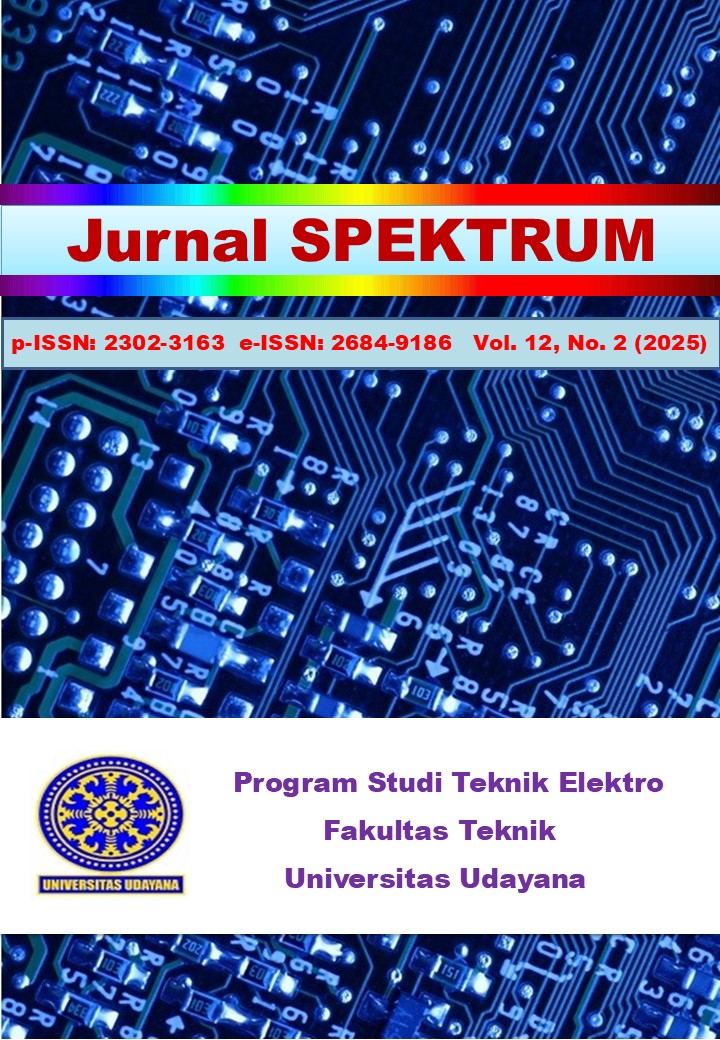ANALISIS PUTARAN TURBIN DAN DAYA GENERATOR PADA PROTOTYPE PLTSa DENGAN VARIASI JUMLAH SUDU PADA TURBIN IMPULS SATU TINGKAT
Abstract
A long-term answer is needed for the waste issue. The Waste Power Plant (PLTSa) is
one technology that helps with waste management by transforming the thermal energy of trash
combustion into usable electricity. The 3R Legian Kaja Integrated Waste Processing Site (TPST)
in Badung Regency, Bali, has the potential to utilize heat energy from waste incineration, but has
not been optimized optimally. The research method used is quantitative descriptive by planning
and creating a single-stage impulse turbine system with variations in the number of turbine blades
of 65, 75, and 85 blades and two types of nozzles, namely flat and round. The test results showed
that the highest turbine rotation occurred in the flat nozzle with 75 blades, which was 1179 RPM
before being coupled to the generator and 922 RPM after being coupled. Torque measurements
in testing with a 5 ? resistor showed a value of 0.47 Nm, with a power output of 41.16 Watts and
a system efficiency of 10.16%. The results of this study indicate that variations in the number of
turbine blades affect system performance, where 75 blades provide higher rotation results
compared to 65 and 85 blades. This is due to the more ideal distance between the blades, so that the fluid flow utilizes energy more optimally. This study is expected to be a reference in the
development of more efficient and sustainable PLTSa technology.
Downloads

This work is licensed under a Creative Commons Attribution 4.0 International License.



